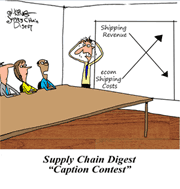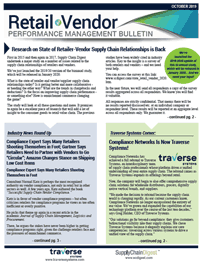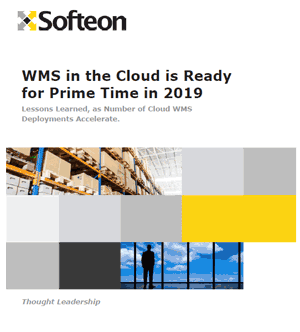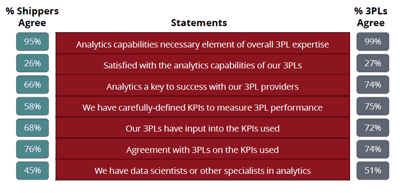State of the 3PL Union Part 2
As usual at the CSCMP conference for 2019, we had the release of the annual 3PL study. The report is now in its amazing 24th year, all under the leadership of my friend Dr. John Langley of Penn State.
A few weeks ago, I did a general summary of the 2020 study, focusing on the core survey results from shippers and 3PLs across the globe (see State of the 3PL Union 2019).
| GILMORE SAYS: |
Shippers are becoming more flexible with their networks and are increasingly willing to discuss ways to optimize their inbound and outbound networks.
WHAT DO YOU SAY?
Send us your
Feedback here
|
Highlights of that data included that total logistics expenditures directed to outsourcing came in at 52%, slightly higher than the year before, and that dreaded "IT Gap" continues on, with shippers saying 3PL IT capabilities are critical but finding those capabilities often lacking.
The report also again featured three "focus topics," and that is what I will review this week.
Use of Analytics in Shipper-3PL Relationships
I think studies relative to use of analytics in the supply chain are always difficult to pull off, in part because that terms means different things to different people. As a result, I think the use of various types of analytics is overstated, and I will argue that is the case in the report here as well, as I will discuss in a moment.
The 3PL Study tries to address this by providing some term definitions. For example, "analytics" is defined as "information resulting from the use of mathematical and statistical methods to transform data into insight."
So, is a spreadsheet showing 3PL costs versus target an analytic? I would say Yes, and clearly excel today is overwhelmingly the leading analytic tool in supply chain.
The report finds 39% of shippers say their use of analytics for planning with 3PLs was significant, with 36% modestly using such analytics, and 25% not at all.
My guess is that the vast majority of those analytics are indeed basic spreadsheets, perhaps in some cases with a graphical front end such as Tableau, not what we might call advanced analytics, with sophisticated mathematics and correlations.
Along the same lines, the survey found 16% of shippers and 21% of 3PLs said they are using the highest form of analytics, which the reports calls "Cognitive/AI/machine learning." That is defined by identifying patterns of activity, with "self-learning feedback loops, where the resulting cognitive applications may become smarter over time through continuing interactions with data and humans."
Sorry, I have been in a number of 3PLs, and I don't think any of them are using cognitive and AI tools for planning with their shipper clients, let alone 21% of them.
With that off my chest, the report cites an example where advanced analytics are being used, involving the current availability of software that provides what it says is powerful insight to transportation and 3PL pricing teams.
"With the benefit of historical shipment and rate/price information and data relating to cost, margins and profitability, prescriptive analytics may be developed that can help pricing discussions to quickly focus on a range of proposals that would be profitable for suppliers and acceptable to prospective customers," the report says.
Some 3PLs have such tools to help them in negotiations with shippers, but only at the top end of the 3PL pyramid, in my opinion.
And similar to and maybe related to the "IT gap" referenced above, the report also finds there is an "analytics gap." That's because 95% of shippers agree that analytics capabilities are a necessary element of 3PL expertise, but only 26% of them are satisfied with those capabilities.
Those data points are part of the graphic below from the report, which to me is most notable for finding that only 58% of shippers say they have carefully defined KPIs to carefully measure 3PL performance. Can that possibly be accurate? Seems very low.
|


















